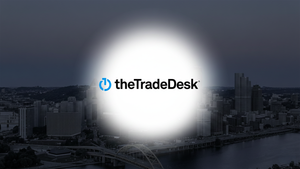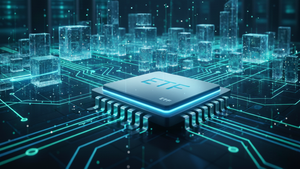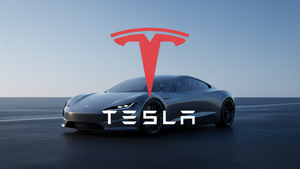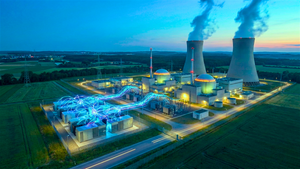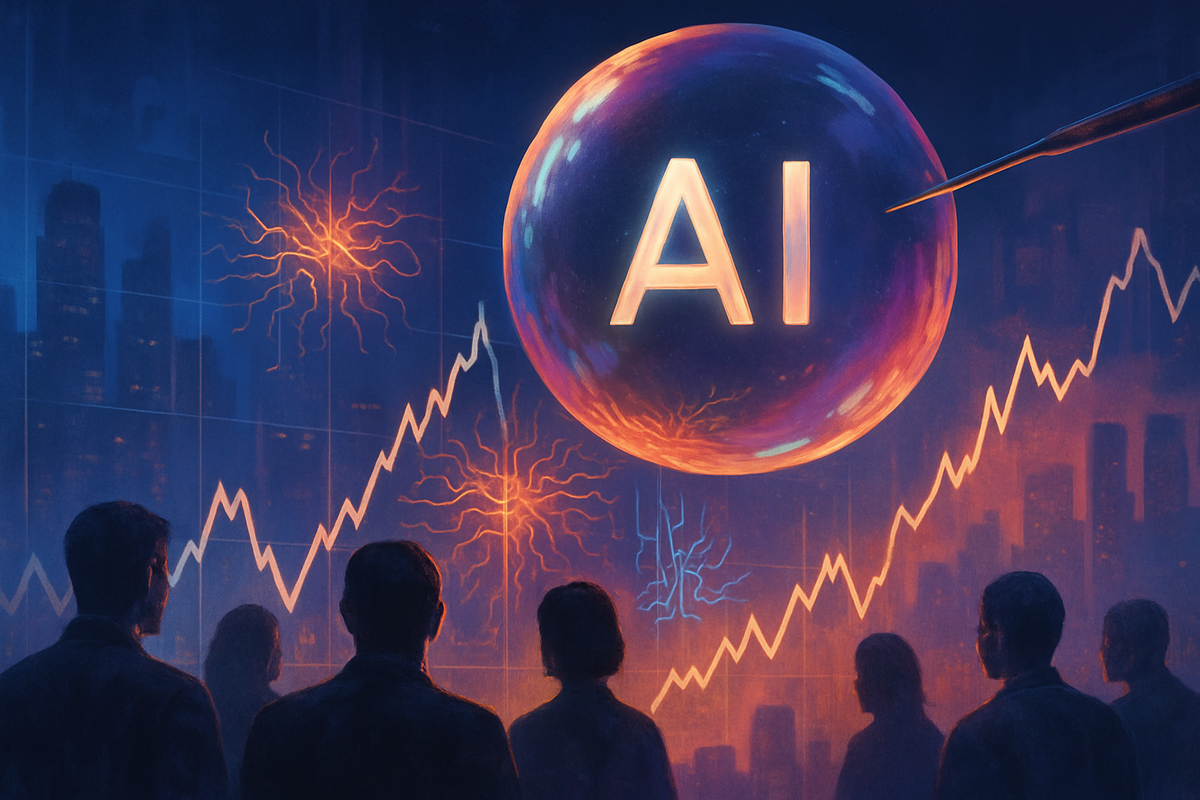
October 17, 2025 – A palpable sense of unease has settled over global stock markets this week, fueled by increasingly vocal warnings of an impending "AI bubble." As valuations for artificial intelligence-centric companies continue their stratospheric ascent, a growing chorus of financial leaders and institutions are drawing unsettling parallels to past speculative frenzies. This apprehension is not merely academic; it's translating into tangible market jitters, with volatility spiking and investors grappling with the dual forces of potential unprecedented returns and catastrophic losses. The crucial question on everyone's mind is whether the current AI-driven rally is a testament to genuine technological revolution or a speculative fever destined to burst.
The market's current trepidation is underscored by recent investor sentiment, revealing a deep division. A significant majority of fund managers now believe AI stocks are in bubble territory, yet a substantial portion of these same managers remain heavily invested, driven by a powerful "fear of missing out" (FOMO). This contradictory behavior highlights the precarious tightrope walk the market is currently undertaking, as the allure of AI's transformative potential clashes with the stark lessons of history.
The Echoes of Bubbles Past: Warnings Grow Louder
The drumbeat of concern around an AI bubble has intensified dramatically in recent months, culminating in a jittery week for global equities. Key financial institutions and prominent figures have issued stark warnings, painting a picture reminiscent of the dot-com bust of the late 1990s and early 2000s, and even the telecom bubble.
The Bank of England, for instance, has publicly flagged a growing risk of a "sudden correction" in global markets, specifically pointing to the "stretched" valuations of leading AI tech companies. This sentiment was echoed by the International Monetary Fund (IMF) and JPMorgan (NYSE: JPM) CEO Jamie Dimon, with Dimon expressing profound worry about a significant market correction within the next two years. Even within the epicenter of AI innovation, skepticism is surfacing; OpenAI CEO Sam Altman candidly admitted in August 2025 that AI is a bubble and that investors are "overexcited," predicting that "someone's gonna get burned." Further fueling these doubts, a Massachusetts Institute of Technology (MIT) study from earlier in the year indicated that a staggering 95% of organizations are seeing no tangible return on their generative AI investments, directly challenging the narrative of immediate and widespread profitability.
The timeline leading up to this moment of heightened anxiety has been characterized by an exponential surge in AI-related stock valuations, often detached from traditional earnings metrics. This rapid appreciation began in earnest in late 2023 and accelerated through 2024, as companies across sectors rushed to announce their AI initiatives and investments. Initial market reactions were overwhelmingly positive, with significant capital inflows into AI infrastructure providers, chip manufacturers, and software developers. However, as the pace of growth became increasingly unsustainable and the rhetoric surrounding AI's future capabilities reached fever pitch, a growing number of analysts began to question the underlying fundamentals. The Cboe Volatility Index (VIX), often referred to as the "fear index," surged by over 22% on October 16th and an additional 6% on October 17th, reaching its highest closing level since April, a clear indicator of the market's rising anxiety. This coincides with a Bank of America Global Research survey for October 2025, revealing that a record 33% of global fund managers now identify an "AI equity bubble" as the biggest global "tail risk," a significant leap from just 11% the previous month.
The AI Divide: Winners and Losers in a Volatile Market
The potential AI bubble presents a bifurcated landscape for public companies, creating distinct winners and losers depending on their core business, valuation, and strategic agility. Companies deeply entrenched in providing the foundational infrastructure for AI stand to gain immensely, or conversely, face the steepest corrections if the bubble bursts.
At the forefront of the "winners" are the semiconductor giants and cloud service providers. Companies like NVIDIA (NASDAQ: NVDA), a dominant force in AI chip manufacturing, and Advanced Micro Devices (NASDAQ: AMD), another key player in high-performance computing, have seen their valuations soar on the back of insatiable demand for their processors. Similarly, major cloud providers such as Microsoft (NASDAQ: MSFT) with Azure, Amazon (NASDAQ: AMZN) with AWS, and Alphabet (NASDAQ: GOOGL) with Google Cloud, are indispensable to AI development and deployment, benefiting from the massive computational resources required. These companies possess strong balance sheets, established market positions, and tangible revenue streams directly tied to AI adoption, which could provide a buffer against a downturn, assuming the underlying demand for AI remains robust. However, their current valuations are incredibly high, meaning any significant slowdown in AI spending or a shift in market sentiment could lead to sharp corrections.
On the other hand, companies that have merely rebranded themselves as "AI companies" without substantial underlying technology or sustainable business models, or those with highly speculative valuations, are most vulnerable. These firms often attract investment based on hype rather than fundamentals, and a market correction would likely expose their weaknesses. Additionally, companies heavily reliant on generative AI for marginal improvements without a clear path to profitability or those facing intense competition in niche AI applications could also suffer. The "circular financing" phenomenon, where companies invest in each other, reminiscent of the telecom bubble, is another red flag that could indicate fragility in certain segments of the AI market. While some firms like UBS argue that stronger financial health differentiates the current situation, the sheer volume of capital flowing into unproven AI ventures raises concerns about capital misallocation. Investors are increasingly scrutinizing the actual returns on AI investments, especially after the MIT study highlighting the lack of ROI for many organizations.
Broader Implications: A Systemic Shift or Fleeting Mania?
The unfolding narrative of a potential AI bubble extends far beyond the immediate fortunes of individual companies, carrying wider significance for industry trends, regulatory frameworks, and the global economy. This event fits into a broader pattern of technological revolutions, each accompanied by periods of intense speculation and subsequent recalibration.
Historically, major technological shifts, from the railway boom to the internet's advent, have seen similar cycles of exaggerated expectations, massive investment, and eventual market corrections that separate sustainable innovation from speculative excess. The current AI fervor shares many characteristics with the dot-com bubble, particularly the rapid escalation of tech valuations and a high share of US GDP growth being driven by information processing equipment and software, levels last seen in 2000. The key difference, however, lies in the fundamental nature of AI's potential to permeate almost every industry, suggesting a more profound and lasting impact, even if current valuations are unsustainable.
The potential ripple effects on competitors and partners are substantial. A significant correction in AI stocks could lead to a broader market downturn, affecting investment in other technology sectors and dampening overall economic sentiment. Smaller tech companies and startups reliant on venture capital, which often mirrors public market sentiment, could face a harsher funding environment. Regulatory bodies are also increasingly taking notice. Concerns about market stability, investor protection, and even the ethical implications of unchecked AI development could spur new regulations on AI companies, data usage, and market disclosure, potentially impacting business models and profitability. The concentration risk in major equity indexes, where a small cluster of mega-cap technology companies now dominate, means that even a modest correction in AI-related stocks could have broader systemic impacts, affecting global demand due to the significant role of US consumer spending tied to stock market wealth. The top five firms now account for 30% of the S&P 500 (INDEXSP: .INX), a 50-year high, amplifying the potential for a domino effect.
Navigating the Future: What Comes Next?
As the AI bubble debate continues to dominate financial discourse, the market stands at a critical juncture, with several potential scenarios unfolding in the short and long term. Investors and companies alike must prepare for a range of outcomes, from a soft landing to a more significant correction.
In the short term, continued volatility is almost a certainty. The prevailing "fear of missing out" (FOMO) among investors, despite widespread bubble concerns, suggests that speculative trading may persist, leading to sharp intraday swings. However, sustained warnings from central banks and influential figures, coupled with any signs of slowing AI investment returns or geopolitical instability (such as renewed US-China trade tensions or a prolonged US government shutdown), could trigger a more widespread sell-off. Companies heavily invested in AI will need to demonstrate clear pathways to profitability and tangible returns on their AI investments to maintain investor confidence. For investors, this period calls for extreme caution, with a focus on fundamental analysis over hype, and potentially a shift towards defensive assets.
Looking further ahead, the long-term possibilities are more nuanced. Even if a bubble bursts, the underlying technology of AI is undeniably transformative. A correction could weed out speculative ventures, allowing genuinely innovative and well-managed AI companies to thrive. This "cleansing" of the market could lead to a more sustainable growth trajectory for the AI sector, driven by real-world applications and value creation rather than inflated expectations. Strategic pivots will be crucial for companies that have over-invested in unproven AI initiatives, requiring them to re-evaluate their R&D spending and focus on profitable use cases. Market opportunities may emerge for value investors willing to pick up high-quality AI assets at discounted prices post-correction. Conversely, challenges will include navigating a potentially tighter credit environment and increased regulatory scrutiny. Scenarios range from a gradual deflation of the bubble, where valuations slowly normalize, to a sharp, sudden crash akin to the dot-com era, which would have broader economic repercussions.
A Crucial Juncture: Assessing the AI Revolution
The current discourse surrounding an AI bubble marks a crucial juncture for financial markets, demanding a sober assessment of both the transformative potential of artificial intelligence and the inherent risks of speculative excess. The key takeaway from this period of heightened anxiety is the stark divergence between the widespread belief in a bubble and the continued investment in AI-related assets, largely driven by FOMO. This paradox highlights the psychological complexities at play in financial markets, where rational analysis often battles emotional impulses.
Moving forward, the market will likely be characterized by increased scrutiny of AI companies' fundamentals. Investors will be seeking tangible evidence of profitability, sustainable business models, and a clear return on investment from AI initiatives, rather than relying solely on growth narratives and future projections. The lasting impact of this period, regardless of whether a full-blown crash occurs, will likely be a more discerning approach to AI investments. Companies that can demonstrate genuine innovation, efficient capital allocation, and a clear path to generating value from AI will ultimately emerge stronger.
What investors should watch for in the coming months includes further commentary from central banks and financial leaders, any significant shifts in fund manager sentiment (especially a decrease in FOMO-driven investment), and concrete data on the profitability and ROI of AI deployments across various industries. Additionally, geopolitical developments and broader economic indicators will continue to influence overall market stability. The AI revolution is undoubtedly underway, but the path forward for its associated market valuations remains highly uncertain, requiring vigilance and a clear-eyed perspective from all participants.
This content is intended for informational purposes only and is not financial advice


